Winter Birding along the “Diamond Route”, Honshu, Japan
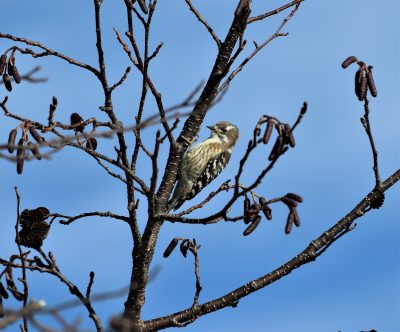
Japanese Pygmy Woodpecker
This was no ordinary trip to Japan. Normally, ecotourists visiting in winter go to Hokkaido, the northernmost island in the archipelago, for Cranes and Sea Eagles, or to Arasaki in Kyushu (the southernmost main island) for Cranes, or even to see the so-called “Snow Monkeys” (actually widespread Japanese Macaques) near Nagano, north-west of Tokyo. We did none of these things.
The main purpose of this trip was to check out the birding along the newly created “Diamond Route,” http://www.diamondroutejapan.com/ which promotes visits to three Japanese prefectures (equivalent to counties) to the north of the capital, Tokyo, which have a traditionally lower tourist footfall – Ibaraki, Tochigi and Fukushima. As part of our trip, we were treated to visits to several cultural sites in these prefectures. A secondary purpose was to visit the island of Sado, offshore from the city of Niigata, on the opposite side of Honshu to Tokyo (Part 2).
We didn’t go to many well-known birding sites, and our visits were often fleeting, as we had much ground to cover. Thus our experiences gave just a flavour of the possibilities for each place. However, it was no less exciting for all that – not just pioneering, but intriguing, too.
A Personal Note
I had never been to Japan before – well, not exactly. On Christmas Eve 2015, I found myself on the way home from my mother’s funeral in Sydney, Australia, stuck in Tokyo’s Haneda airport for seven hours. My disgruntlement and sadness turned to curiosity as I wandered to every corner of the transit lounge, trying to find some greenery out of the window where there might be birds. Away in the distance Mount Fuji stood proud, and closer to, I could make out some lakes and reedbeds beyond the runway, with gulls, ducks and cormorants. The overwhelming feeling from that emotional day was that, some day, I would love to visit Japan properly. This came true, thanks to Bird Watching magazine and Wiki Travel.
29th November – IBARAKI PREFECTURE
After a 10-hour flight, most people descend on their hotel and sleep. Not us. We emerged from the airport mid-morning, excited by the possibility of birding for the rest of the day. None of us had been here before, so there was much new and exciting to look forward to.
The other participants were Jon Dunn from Greenwings Wildlife Holidays, Leo Linnarz from Blue Elephant in Holland and Roger Barnes from Bird Holidays. Our bird guide was Masayuki Shamada (“Masa”). In charge of the whole trip was Yuki Matsuura, with Andrea Antonini assisting and translating (yes, an Italian translating from Japanese into English), both working for the exceptional travel agency Miki Travel https://www.miki.co.uk. Everything was magnificently organised.
On our short journey to the area of Lake Kisamigaura, we saw a selection of common Japanese birds:
“Black-eared” Kite – closely related to Black Kite, probably the same species
Rock Dove
White-cheeked Starling – quite similar to Common Starling, but of course has white cheeks and also white underwings
Carrion Crow – the Japanese crows are famous for placing large nuts on the tarmac at busy traffic junctions in several cities. When the lights turn red, they place nuts on the road and fly off as they turn green again. The traffic crushes the nuts and, when the lights turn red again, they fly down to eat their crushed food.
Jungle Crow – with larger and longer bill
Tree Sparrow – as in many parts of Asia, replaces House Sparrow
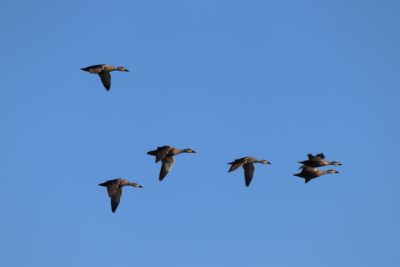
Eastern Spotbill Ducks
Lake Kasumigaura
This is a large lake (the second largest in Japan,) 60km from Tokyo. There are extensive areas of open water, lots of reedbeds and even more extensive paddyfields. As Jon Dunn commented, “It’s a bit like Minsmere in Japan!”. We visited four different areas:
Ukishima
(This place is actually famous for two summer visitors, Japanese Marsh Warbler and Japanese Reed Bunting, but both were obviously long gone in late November.) It’s on the south-east side of the Lake. We saw:
Eastern Marsh Harrier (nowadays considered a different species to that in UK. Male has white underparts and a lot more grey on its wings). Lots over the reedbeds
Black-eared Kite
Western Osprey – 1 with a fish flying along the edge of the lake. Didn’t expect to see this in winter.
Reed Bunting
Black-faced Bunting – 1 flew away calling. Apparently common, but we didn’t see any others.
Zitting Cisticola (H) – same species as in Europe
Nishinosu
This was an excellent area of rice paddies with a little open water, close to some agricultural fields. Also on the south-east lakeside.
Japanese Wagtail – a very smart bird with lots of white on its wings, quite large
White Wagtail – lots here, too
Buff-bellied Pipit – 1-2 with the wagtails
Meadow Bunting – 1 on a wire. Amazingly, this was the only individual we saw on the trip.
Dusky Thrush – plenty around the field edges and roadsides here. This proved to be common almost everywhere we went. It is a very smart bird breeding in northern taiga of the far east.
Brown-eared Bulbul – Very common everywhere with vegetation, including forests, gardens and cities. It is apparently the world’s northernmost breeding member of the Bulbul family.
Vega Gull – 1 flew over. It’s the far eastern equivalent of Herring Gull.
Oriental Turtle Dove – common even in winter.
Black-eared Kite
Lapwing
[Probable Green Sandpiper]
Edosaki
By an inlet on the southern shore of Lake Kasumigaura, this is a dyke overlooking farmland on one side and a broad canal on the other. A good place for birds, noted locally for the geese. There were lots of birds on the canal, especially.
Taiga Bean Goose (50 in one flock, agricultural fields)
Eurasian Teal – 10s
Pintail
Mallard
Eastern Spot-billed Duck – a large, brown duck very common in Japan in winter – 20+
Green Pheasant – a Japanese endemic. It’s quite common, but this was the only one we saw, and just a single bird flushed
Little Grebe – maybe 10
Black-necked Grebe – 3
Great Crested Grebe – 2
Great Cormorant
Great Egret
Little Egret
Common Coot – many
Grey-capped (Oriental) Greenfinch – on roadside wires with Tree Sparrows. These are browner on the breast than “our” Greenfinch, almost chestnut. They are quite smart.
Tree Sparrow
Amada
I’m not sure exactly where this is, but it’s a large reedbed close to the previous site, where people park on the road. Harriers roost here and there were several photographers set up and ready for them. The following list includes some birds of the surrounding area.
Eastern Marsh Harrier
Hen Harrier – a single female
Common Kestrel – 1
Eastern Buzzard – several in the area
Grey Heron
Bull-headed Shrike – this is the common shrike of Japan in the winter. Apart from this immediate area, we only saw a few others, mainly in the lowlands.
Lake Hinuma
This lake is 90 minutes to the north of the Lake Kasummigaura area, close to the city of Mito. Well into the winter afternoon, our visit was brief. It’s a Ramsar site (Wetland of International Importance), brackish in character. Apparently, the Steller’s Sea Eagle occasionally winters here.
Amikake Park
We had just a short time here, a spot on the western end of the lake. Apart from a lot of waterfowl, mainly common species, the reedbeds and scrub were rather good for small birds.
Mute Swan – uncommon in Japan, introduced
Mallard – the commonest duck, here in thousands
Pintail
Pochard – small numbers
Tufted Duck – the only place we saw this species
Greater Scaup – maybe 10
Common Coot
Black-headed Gull – 1
Japanese Bush Warbler – heard only. A common bird in Japan, but hard to find in winter. This individual gave a couple of call-notes. The song is amazing, a pure tone followed by a flourish. In Japan, some female announcers are called by the Japanese name for this bird, uguisu-jō (“jo” = woman)
Daurian Redstart 1 male. Not as common as expected.
Grey Bunting – 1 female. Good view.
After a crazy day’s birding, we retreated to the comfortable Daiwa Roynet Hotel in Mito.https://www.daiwaroynet.jp/english/mito
30th November – IBARAKI PREFECTURE
Time ran out on us yesterday to get to the coast, so our hosts kindly rescheduled in a very quick trip to the coast at Haraiso, east of Mito. I think this is quite countercultural to the Japanese way of doing things but, with the possibility of Harlequin Duck in the harbour, we were very grateful.
Hiraiso Coast
A 20 minute stop here was amazing. I had never seen a Harlequin Duck before. In the harbour and from the breakwater beyond we saw:
Eurasian Wigeon 20
Eastern Spotbill Duck 20
Greater Scaup 2 – in the harbour
Black Scoter 5 – flying offshore (now considered a different species to our Common Scoter)
Harlequin Duck 3 – female close up and a pair further away to the north, near a rocky promontory
Red-breasted Merganser 1 – flypast
Temminck’s Cormorant – 20 (excited to see this localised species, mainly found in Japan.)
Pelagic Cormorant – 1 (a Pacific species)
Black-tailed Gull – 20 (what a smart gull!)
Vega Gull
Common Sandpiper
Peregrine
Blue Rock Thrush – 1-2 on sea wall. (Looks completely different to the Blue Rock Thrush most Europeans know, with a brilliant reddish breast)
Buff-bellied Pipit
White Wagtail
The coast here looks really exciting. Who knows what a storm might bring in from the Pacific? Ancient Murrelet is apparently sometimes recorded. Our guide Masa also saw some Slaty-backed Gulls further offshore.
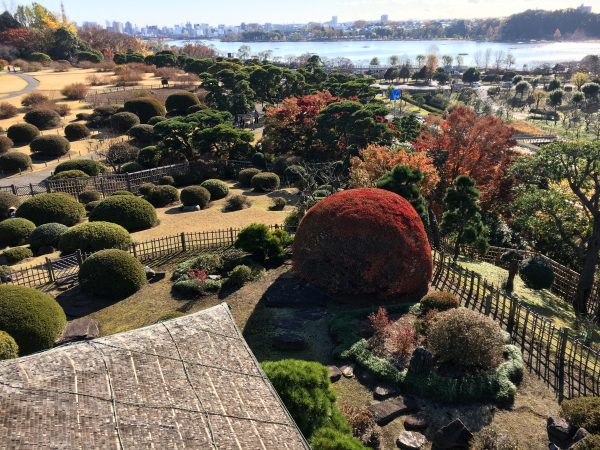
Kairakuen
Kairaku-en (偕楽園) , Mito
A half hour drive brought us back into Mito. Our next stop, we knew, was a garden on the outskirts of Mito. We had no idea that it would be so big, so lovely and so birdy. A cracking place.
Kairakuen is considered one of the Three Great Gardens of Japan (the others are in Okayama and Kanazawa – curiously not Tokyo.) It is unique for the fact that when it was built, in 1841, it was intended not as a private garden, but as somewhere for the public, which was most unusual for the day. It is best known, as so often in Japan, for the blossom in late February and March, plum in this case, but it was exactly bad in late autumn. It is quite hilly, and the views over Lake Senba are gorgeous.
There were quite a lot of birds around, including a species that I was desperate to see, the deliciously coloured Varied Tit.
Japanese Tit – like a pale Great Tit
Varied Tit – gorgeous
Japanese White-eye – distinctive green birds with broad white eye-rings
Hawfinch
Brown-eared Bulbul
White Wagtail
Dusky Thrush
Goldcrest
Daurian Redstart (female)
Carrion Crow
Distant (on Lake Senba)
Common Coot
Great Egret
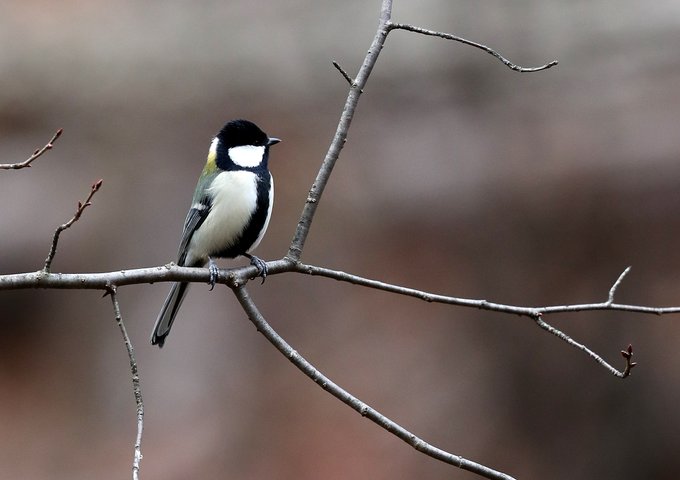
Japanese Tit (Jon Dunn)
On our transfer to our next site we saw a few birds:
Northern Goshawk – flew alongside the bus
Black-eared Kite – very common
Eastern Buzzard – common
Slavonian Grebe – 1 on a stretch of river
Great Egret
Little Egret
30th November continued – TOCHIGI PREFECTURE
Ichikai
This is a small town between Mito and Utsunomiya, nestled in an area of wooded hills. Ornithologically it is best known for its summer breeding population of the Grey-faced Buzzard.
We visited a lightly wooded hillside with a temple at the top, and saw the following birds:
Black-eared Kite
Eastern Buzzard
Japanese Wagtail -in the car park
Oriental Turtle Dove
Carrion Crow
Eurasian Jay
Brown-eared Bulbul
Oriental Greenfinch
Rustic Bunting – 1st winter. This species turned out to be the commonest bunting on our trip
From a service station on the highway we also saw a Hawfinch. They are commoner here than in Britain.
Nikko (日光), Toshigi
The city of Nikko is the gateway to its namesake National Park, but before you enter a world of hills, mountains, lakes, hot springs and rushing rivers, the town itself is home to some historic treasures – a UNESCO World Heritage Site, no less, The Shrines and Temples of Nikko. It is a short journey north from Tokyo by train.
We ate lunch at a splendid local restaurant, the Asaya Resthouse http://www.nikko-asaya.jp, next to the river. As by tradition, there were no chairs; everybody sits on the ground, kneeling or squatting in front of a large, slightly raised table. And of course, you take your shoes off first and are given indoor footwear. Various different foods are presented, in a similar way to Spanish tapas, and you get served delicious green tea.
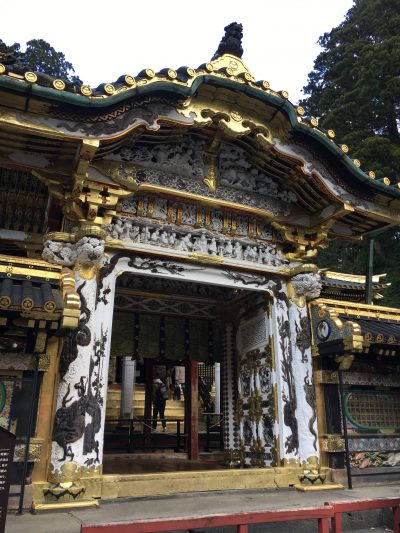 Toshogu Shrine (東照宮)
Toshogu Shrine (東照宮)
Built from 1617 onwards, this is Japan’s most lavish shrine; most places of worship in Japan are much simpler. The remarkable carvings and bright colours on the buildings, as well as the architecture, take your breath away. The Shrine contains elements of both Shinto (the deep-rooted “native” religion of Japan) and Buddhism. This shrine contains the mausoleum of a man called Tokugawa Ieyasu. He is a very important historical figure in Japan because he founded the Tokugawa shogunate, which ruled the country for 250 years until 1868.
In case you didn’t know, a Shogun was effectively a military dictator. The title was hereditary, although in fact four different clans ruled Japan between 1185, when the Shogun period began, and its end in 1868 (see more about this later on.)
Several features of the period of the Shoguns have entered popular western culture. The Samurai were the officer caste, paid protectors of the landowners. They had a famous code of conduct and of living, much admired by current Japanese. They carried the famous swords. During the last Shogunate, Tokugawa, they become more heavily involved in administration and other duties. The Ninja were the mercenaries of the era, with much less honour than the Samurai. They were well known for secrecy and their ability with surprise attacks and irregular warfare. Recruited from the lower classes, little is known of them in the actual historical record, although folk tales abound.
I quote from Wikipedia: “During the chaotic era of warring states in the 15th and 16th centuries, Japan splintered into dozens of independent states constantly at war with one another. Consequently, warriors were in high demand. It was also the era when ninja, warriors specialized in unconventional warfare, were most active. Many of the famous samurai movies by Kurosawa are set during this time.”
At Toshogu, among the many extraordinary buildings is a five-storeyed pagoda built in 1818 (apparently very unusual), and the extraordinarily opulent Yōmeimon Gate, whose nickname in Japan means that you never tire of looking at it. In Honjido Hall, the ceiling has a large painting of “The Crying Dragon.” You file in and a man knocks two sticks together, with great ceremony; he then moves under the dragon’s head, knocks the sticks together again and there is an amazing ringing echo. It’s very cool.
On the Sacred Stables is a carving of the Three Wise Monkeys, a common symbol in Japanese (and Chinese) culture. They “hear no evil, speak no evil and see no evil.”
There were a few birds in the grounds:
Varied Tit
Brown-eared Bulbul
Carrion Crow
Rustic Bunting
Nikko Botanic Garden https://www.bg.s.u-tokyo.ac.jp/nikko/eng/
This botanic garden is run by the University of Tokyo. We arrived late on the last day of opening of the year, so our visit was short and it was getting dark. It has many thousands of trees and other plants, plus the river. It looks a very good place. We saw:
10+ Rustic Buntings
Coal Tit
Willow Tit
Japanese Pygmy Woodpecker
Darkness soon closed in, and we had a coach trip into the mountains to reach our hotel. Here there was snow on the ground! The hotel Nikko Astrea https://www.nikkoastraea.com/ was clean, very spacious, nice and warm and the food was great.
1st December – TOCHIGI PREFECTURE
It snowed overnight and there was plenty on the ground. Leo and I had a quick pre-breakfast walk around the hotel grounds and saw:
Lots of Dusky Thrushes
10 Hawfinches
Nuthatch
Willow Tit
Japanese Pheasant called.
After breakfast, we covered some of the same ground, the Koutoku Ranch and Koutoku Pond by foot from the hotel. Birding was hard work.
We saw at least 4 Willow Tits, Long-tailed Tit, Treecreeper, Great Spotted Woodpecker, Japanese Pygmy Woodpecker, plus Nuthatch and lots of Dusky Thrushes.
We walked down the road towards the pond/marsh, getting great roadside views of the woodpeckers and creepers. Masa told us that Solitary Snipe wintered along the river. Unfortunately a photographer had got to the marsh before us, so any Snipe there might already have flushed. We couldn’t find one along the river, despite much searching. Solitary Snipe sounds like an awesome bird, big and quite boldly coloured and wintering in the un-snipe-like habitat along streams in woods.
The habitat here must be wonderful in spring and summer in the mountains, with lots of warblers, flycatchers and Cuckoos, to name just a few.
We made a quick transfer down to Nikko Yumoto Visitor Centre next to Lake Yunako (Masa had a brief view of a Japanese Macaque but the rest of us missed it). This is all part of the very scenic Nikko National Park
Lots of ducks were here:
Goosander
Smew 1
Goldeneye
Pochard
Eastern Spotbills
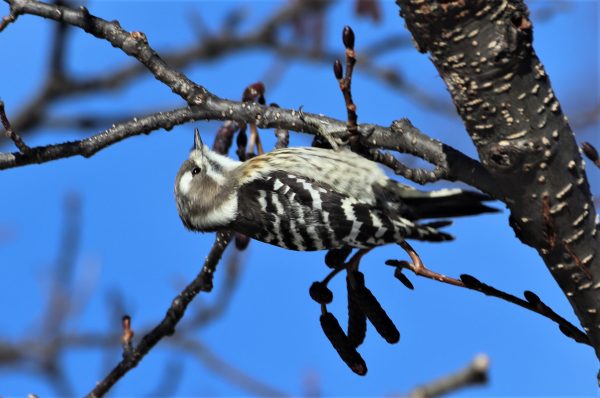 We also had priceless close views of Japanese Pygmy Woodpecker.
We also had priceless close views of Japanese Pygmy Woodpecker.
Exciting news now filtered down to us. A Steller’s Sea Eagle had been seen next to Lake Chuzenji that morning. A local birder showed us photos. We persuaded our team to take us to the site, which they did.
Down at the waterside, on the edge of Lake Chuzenji, by a campsite near the Kanaya Hotel, we saw, to our great chagrin, that the bird had departed its morning perch. There were Black-eared Kites and Buzzards around, but no eagle. Having missed the Snipe, it was beginning to feel like one of those days.
There were a couple of nice waterbirds around, our first Grey Wagtail of the trip and, some soothing for our disappointment, a cracking Asiatic Dipper. This little bird sang loudly from a riverside perch (it’s normal for Dippers to sing in winter), and then went into the lake to feed. It behave more like an auk or diving duck than a Dipper, floating on the water and then submerging. Very odd.
It was soon clear that the eagle had scarpered, so we headed back to Lake Yunako for a visit to the delightful Yudaki Falls, a tourist spot but with a nice, if treacherous and snowy boardwalk trail along the river.
Birding was again pretty hard work. We missed Solitary Snipe again despite a good hour’s searching. We did see:
Asiatic Dipper again
Goldcrest
Japanese Tit
Willow Tit
Wren – an amazingly dark bird, quite unlike the Wrens back home
At the Waterfall we were first introduced to Japan’s remarkable dispensing machines. You can buy a heated café latte – in a tin! it isn’t bad, either.
We briefly tried a site that is good for White-backed Woodpecker, but again without success.
We had a superb late lunch at the Masuya, https://masuya.hp.gogo.jp/pc/, on the eastern shore of Lake Chuzenji, which not only served fabulous locally sourced fish, it also gave a great a good view over the water, where we could check for eagles. Among the birds viewable were:
Great Cormorant
Black-necked Grebe
Goosander
After lunch we walked down to check the waterfront and saw a flock of about 15 Black-necked Grebes.
A short distance south we parked for a look at the ground around the old Italian and British Embassy compounds. There were a few tits around, including Japanese and Willow Tit, and Long-tailed Tit, but not much else.
We decided to transfer to our new hotel early, since it was a shoirt walk to the lakeside close to where the eagle had perched earlier in the day. A short vigil wasn’t successful. There was a Nuthatch and lots of Dusky Thrushes in the grounds.
Our new hotel was The Lake Chuzenji Kanaya Hotel https://www.kanayahotel.co.jp/eng/ckh/. It was pretty grand and the food was glorious. The log fire in the main reception area was nice.
The Japanese are very keen on communal baths, or onsens and this evening three of us tried before supper. What seems odd to a Western visitor is that you actually wash yourself first before you get into the bath itself. Here we each sat at a basin (like those at a hairdresser’s) and showered ourselves. Only after this did we all relax in the hot bath. Rather splendidly, we could do this outside because even here in the highlands with snow on the ground, the water was so warm. You cannot be very shy in enjoying an onsen, but it is pretty relaxing! You could get a pretty good bird list in the outdoor ones, too.
2nd December – TOCHIGI PREFECTURE
At dawn we gathered at the shores of Lake Chuzenji. The morning was gloomy and our mood not optimistic. Eastern Buzzards occupied the eagle’s former perch and Black-eared Kites flew around.
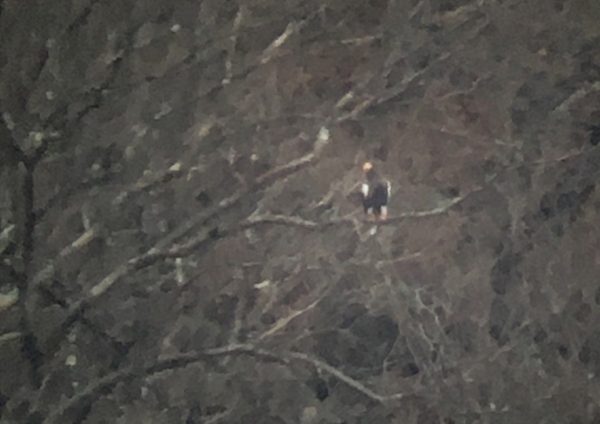
Photo by Jon Dunn
After maybe 15 minutes Masa, who was perched on a step with his telescope keenly trained, suddenly let out a very Japanese cry of excitement – “Ha!”. And there it was, a STELLER’S SEA EAGLE, one of the most exciting birds in Japan, or anywhere. Admittedly, it was more or less in North Korea, or at least flying over the far side of the lake, but even at great distance it looked magnificent. It flew low over the lake, made a desultory attempt to catch a fish, and then went to perch on a treetop.
2nd December – FUKUSHIMA PREFECTURE
A long trip in the bus took us into Fukushima Prefecture. Our first destination was a birding stop at the splendidly-named Lake Inawashiro. Having visited Japan’s second largest lake on our first day, this was a taste of Japan’s fourth-biggest (or third-biggest, depending on what source you use.) This lake is normally very beautiful, the water showing off many different hues. It was mainly grey today.
A brief stop and stroll along the cycle track at the north-east end was rewarded with some birds, but was then curtailed by torrential rain.
There were lots of ducks, including
Mallard
Pintail
Eastern Spotbill
Wigeon
Teal
Pochard
Smew 1
We also saw a bunting briefly. This is apparently a reasonable site for the delectable Long-tailed Rosefinch. We drove a little further west and soon saw several herds of swans in the agricultural fields and paddies, each of them mixtures of Bewick’s Swans and Whooper Swans.
The area is obviously famous for its swans, because you can take tours of the lake on a boat shaped like a swan. Near to the landing area for this boat, there was a bay. Here, just by the road and evidently completely unafraid of humans, was an extraordinary gathering of ducks – not Mallards, as you might expect for unfussy ducks, but wild Pintails, probably a couple of thousand of them, wave after wave. A few other common ducks were further away.
Our cultural afternoon was spent at the city of Aizu-Wakamatsu (会津若松). It is particularly famous for two things: its Samurai tradition; and Sake. The latter is alcoholic drink made by fermenting rice.
We began at Aizu Samurai Residence Museum (会津武家屋敷) http://bukeyashiki.com/. The original residence burned down in 1868, so this complex is restored, but it is nicely done. Best I quote from the blurb: “The Residence served as the quarters of the region’s most important and highest ranked samurai. Because of the prestige of the samurai and the size of his retinue, the samurai residence is quite expansive. There are dozens of different rooms and sections, including gardens, guest rooms, a tea house, an archery range and a rice mill. Inside many of the rooms there are mannequins of the former inhabitants portraying either typical scenes of daily life or dramatic historical events.”
Aizu is particularly famous for its part in the bloody end of the Shogun period, which took place as part of the Japanese Civil War, the “Boshin War”, in 1868 (Queen Victoria was on the throne in Britain.) After lasting for 700 years, the Shogun-controlled feudal period gave way to the Meiji Restoration, with Emperor Meiji in power.
The Samurai inhabitants of Aizu were among the very last to remain loyal to the Shogun, even after the restoration. They paid for being on the “wrong” side. The Battle of Aizu included a month-long siege of Tsuruga Castle, which was eventually destroyed (having been built in 1384.) Historians seem not to know the number of casualties, but the siege is famous in Japanese culture for one extraordinary incident. A detached company of young Samurai, mostly just teenagers, observed the siege from Mount Iimori, which overlooks the town. They saw a huge fire, assumed it was the castle that had fallen (it wasn’t) and they all committed ritual suicide (seppuku.) One of the dozen or so survived and told the tragic tale.
There are photos of these sad souls at the newly restored Tsuruga Castle (鶴ヶ城) http://www.tsurugajo.com/language/eng/.
It is a fine building set in magnificent grounds, and the view of Aizu from the top is worth seeing.
Here were encountered our first very splendid Japanese (Green) Woodpecker. There were also usual thigs such as Carrion Crows and Brown-cheeked Bulbuls. The moat around the castle had Eastern Spotbill ducks.
We also made a brief stop at Suehiro Sake brewery, founded in 1850. I recommend peach flavour.
It was a long drive to our hotel Urabandai Lake Resort. If you think we liked it, just look at its website!! https://global.lakeresort.jp/en-gb
3rd December – FUKUSHIMA PREFECTURE
We woke up to heavy snow on the ground. The temptation to throw snowballs was hard to resist, but we weren’t sure whether it was the done thing here in Japan.
After breakfast, we walked from the hotel into the nearby forests (mostly coniferous) and colourful lakes on the slopes of Mount Bandai (1819m), on our way to Lake Goshikinuma. The scenery was utterly gorgeous, especially in the snow, which fell with increasing enthusiasm. Birding became pretty difficult, although undoubtedly great fun. The highlight was coming across a Falcated Duck at last – in fact, a pair. Jon also saw a Japanese Squirrel.
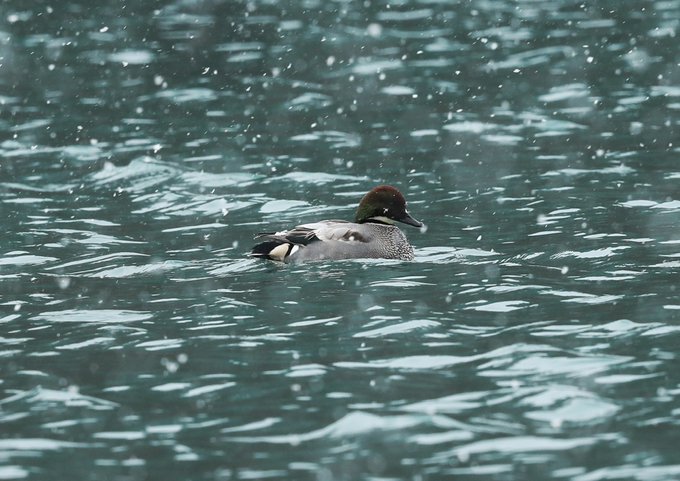
Falcated Duck in the snow. Photo by Jon Dunn
The birds we saw were:
Wigeon
Falcated Duck
Eastern Spotbill
Great Spotted Woodpecker
White Wagtail
Japanese Bush Warbler (heard only)
Varied Tit
Coal Tit
Willow Tit
Japanese Tit
Crossbill (a small flock overhead)
We arrived at the Urabandai Visitor Centre quite wet and cold, albeit delighted with our duck. The area was deserted.
We went to a nearby trail to look around. Various birds are recorded for here, but the weather was not in our favour. I was especially hoping to see Japanese Waxwing, which occur here by the large clumps of mistletoe (there was a swampy trail with some boardwalks in an open wood which is mainly deciduous). We did see:
Dusky Thrush – common here, as everywhere it seems
Japanese Bullfinch – this is a seriously cool bird. The males are quite dissimilar to the Bullfinches of Western Europe. They have no red on the breast, but instead are smoky grey. The only pink-red colour is on the cheeks. The scientific name is Pyrrhula pyrrhula rosacea – and today everything had rosy cheeks!
We then drove towards Fukushima itself, having lunch at Yamu, a converted 220-year old Japanese house which is now a fine dining restaurant, with a lovely garden. http://yamu.jp/
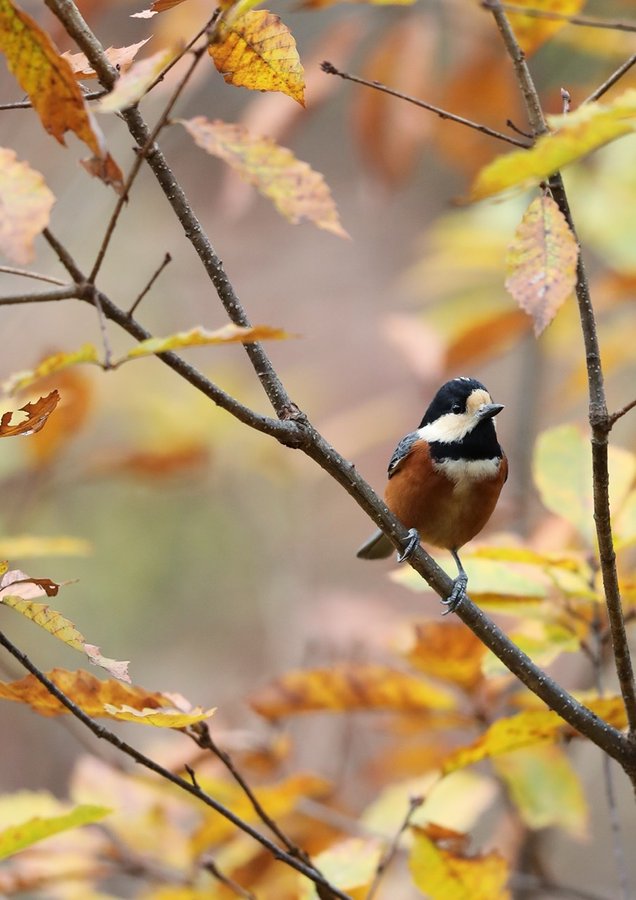
Varied Tit (Jon Dunn)
The afternoon was a treat, visiting Kotori-no-mori Forest park, on the edge of Fukushima. The name is translated as “Forest of Small Birds,” and it lives up to it. There is a visitor centre here with bird books, and there are even bird feeders, which from our experience seem uncommon in Japan. We also took a walk to look for some Long-tailed Rosefinches that had been seen in the morning, but unfortunately they had gone.
We saw the following:
Eastern Spotbill
Eurasian Sparrowhawk
Bull-headed Shrike
Brown-cheeked Bulbul
Dusky Thrush
Pale Thrush – at least 2, the only ones of the trip
Varied Tit (absolutely gorgeous)
Japanese Tit (likewise)
Rustic Bunting
Carrion Crow
In addition, a White’s Thrush had been seen in the morning.
Frustrating footnote: At one point Leo and I saw a bird flying past which then dived into cover. We looked at each other and said “That looked like an Accentor.” The mien and the flight was just right. But we never got a proper look. According to Masa, somebody heard a Japanese Accentor there the next day!
The summer must be beautiful here, and apparently there are Japanese Paradise Flycatchers and Narcissus Flycatchers.
We drove back to Urabandai Lake Resort in darkness, very grateful for their amazing buffet and beer on tap!
4th December – FUKUSHIMA PREFECTURE
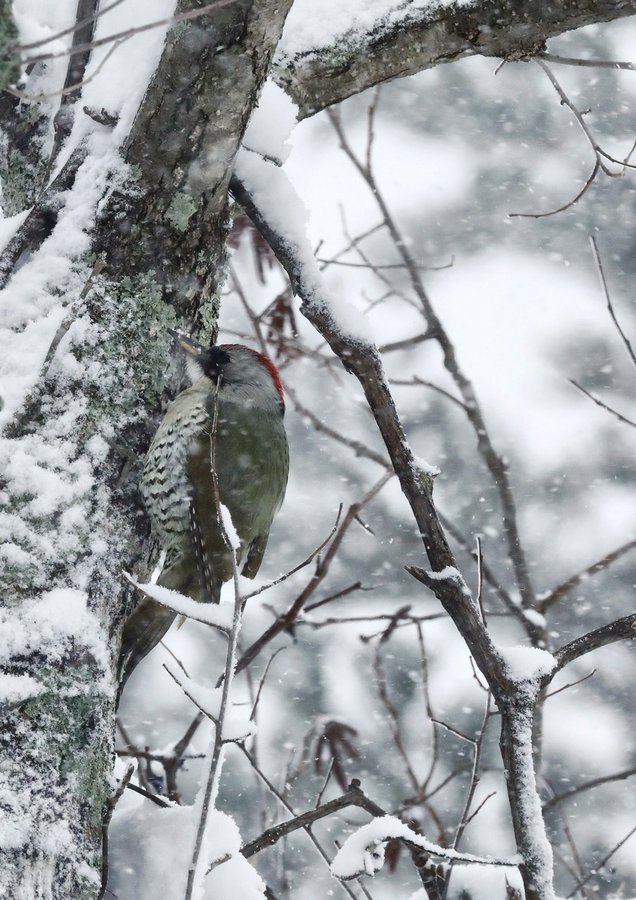
Japanese Woodpecker (Jon Dunn)
It turned out that, yesterday, the snow was only pretending. Today it was serious. Thanks to Masa, we had another go at the Visitor Centre for the Waxwing. But the snow was deep, and all we saw was Dusky Thrush and a very smart Japanese Woodpecker.
We turned for Niigata and the port, where our adventure would continue on SADO ISLAND (see part 2, forthcoming).
On the journey, the usual Japanese birds plus:
Eurasian Sparrowhawk
Whooper Swan
Bewick’s Swan
At the port:
Black-tailed Gull
Black-headed Gull
Vega Gull
Glaucous-winged Gull (I think we got this right)
Slaty-backed Gull
Great Cormorant

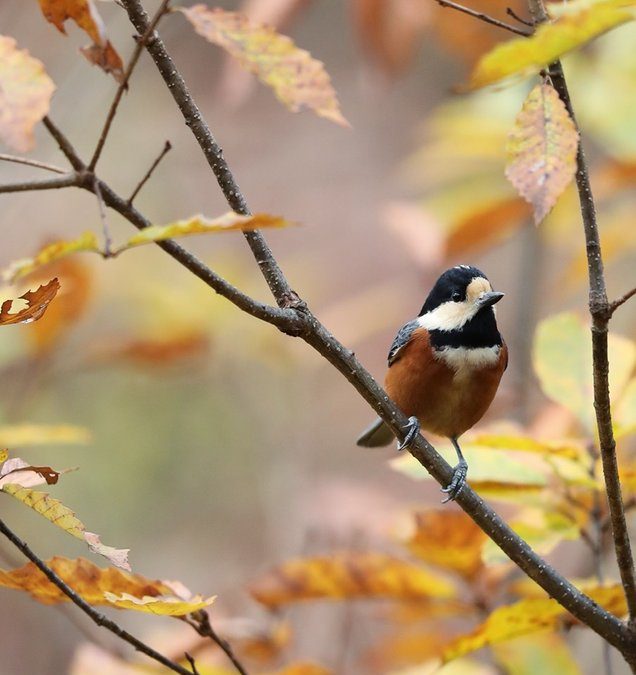
Fabulous, would love to go there, thank you Dominic
Hope you do, Mike.
Lovely. Me want to go. Have 2 Japanese friends. Were the birds tame.
I would love to go there for the birding and also I like Japanese art
What are you waiting for?
Sounds as if you had a great time.
It was great.
Great blog. Particularly liked the history.
Great read Dominic. It’s served to further reinforce my desire to visit Japan one day.